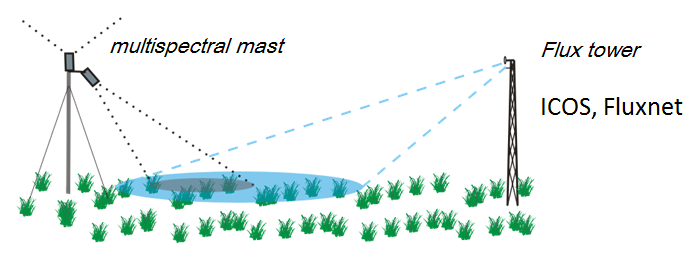NordSpec measurements are carried out with the aim to capture seasonal and interannual variations in vegetation conditions. To achieve this we emphasize the use of simple and robust equipment undergoing regular calibration. Measurements at the field sites are conducted using instruments that record incoming and reflected solar radiation in visible and near-infrared wavelength channels. The reflection in these bands responds to seasonal vegetation variations, and are related to a number of ecosystem processes such as photosynthesis and carbon uptake. We also investigate the possibility of measuring the efficiency of the conversion from light to carbon, and other biophysical processes. Most of our measurements are co-located with carbon flux towers managed by e.g. ICOS or FLUXNET.

Different spectral vegetation indices can be generated from the measurements:
NDVI: Normalized Difference Vegetation Index. The most commonly used vegetation index, related to photosynthetic light uptake of the vegetation canopy.
PRI: Photochemical Reflectance Index. Sensitive to the rate of conversion from light energy to carbon during photosynthesis.
PPI: Plant Phenology Index. A newly developed vegetation index for monitoring of phenology and vegetation productivity. The index is linearly related to green leaf area index (LAI), has low sensitivity to snow background, and is dynamic also in dense vegetation. PPI is described by Jin and Eklundh (2014a).
We also estimate fAPAR, fractional Absorbed Photosynthetically Active Radiation.
Field calibration of instruments follow procedures in Jin and Eklundh (2014b).
References
Jin, H. and Eklundh, L., 2014a, A physically based vegetation index for improved monitoring of plant phenology, Remote Sensing of Environment, 152, 512-525. http://dx.doi.org/10.1016/j.rse.2014.07.010
Jin, H. and Eklundh, L., 2014b, In situ calibration of light sensors for long-term monitoring of vegetation, IEEE Transactions of Geoscience and Remote Sensing, 53, 3405-3416. http://dx.doi.org/10.1109/TGRS.2014.2375381
